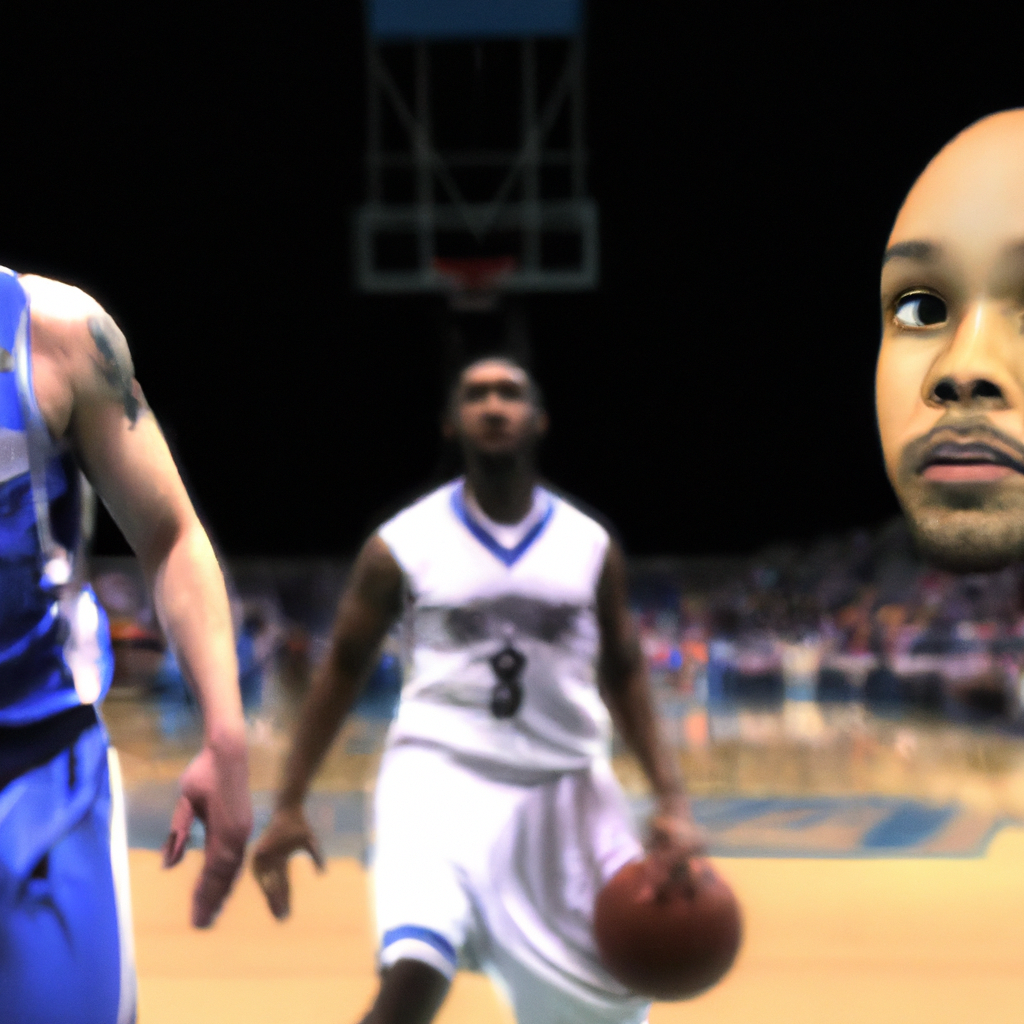Jameer Nelson on HS players picked ahead of him in 2004: “Some of them were good, but most of them wasn’t”

Evaluating the Impact of Jameer Nelson’s NBA Career
Jameer Nelson, a former professional basketball player, had a successful career in the NBA. However, his journey to the league was not without its challenges. In the 2004 NBA Draft, Nelson was selected as the 20th overall pick by the Denver Nuggets. This was a disappointment for him, as he believed he should have been chosen much earlier. Reflecting on this experience, Nelson made a candid statement about the players picked ahead of him, saying, “Some of them were good, but most of them wasn’t.”
Nelson’s comment raises an interesting question: how did his career compare to those players who were selected ahead of him? To evaluate the impact of Nelson’s NBA career, it is essential to examine the players chosen before him and assess their contributions to the league.
One of the players selected ahead of Nelson was Dwight Howard, who was chosen as the first overall pick by the Orlando Magic. Howard had a remarkable career, becoming an eight-time NBA All-Star and winning the Defensive Player of the Year award three times. His impact on the court was undeniable, and he played a significant role in leading the Magic to the NBA Finals in 2009. It is clear that Howard’s talent and success validate his selection as the top pick in the draft.
Another player chosen ahead of Nelson was Emeka Okafor, who was selected as the second overall pick by the Charlotte Bobcats. Okafor had a solid career, winning the NBA Rookie of the Year award in 2005 and establishing himself as a reliable defensive presence. While he may not have reached the same level of stardom as Howard, Okafor’s contributions to the teams he played for cannot be overlooked.
However, not all players picked ahead of Nelson had the same level of success. For instance, Darko Milicic, who was chosen as the second overall pick by the Detroit Pistons, struggled to make an impact in the NBA. Despite being highly touted as a talented player, Milicic failed to live up to expectations and became known as one of the biggest draft busts in NBA history. Nelson’s comment about some players not living up to their potential seems to ring true in Milicic’s case.
While it is true that some players chosen ahead of Nelson had successful careers, it is also evident that Nelson himself had a significant impact on the NBA. Throughout his 14-year career, Nelson played for several teams, including the Orlando Magic, Dallas Mavericks, and Denver Nuggets. He was known for his leadership skills, basketball IQ, and ability to make clutch plays. Nelson was a one-time NBA All-Star and played a crucial role in leading the Magic to the NBA Finals in 2009. His contributions to the teams he played for cannot be overlooked.
In conclusion, Jameer Nelson’s comment about the players picked ahead of him in the 2004 NBA Draft reflects his disappointment at being selected as the 20th overall pick. While some players chosen ahead of him had successful careers, others failed to live up to expectations. However, Nelson himself had a significant impact on the NBA, showcasing his skills and leadership throughout his career. Evaluating the impact of Nelson’s NBA career highlights the complexities of the draft process and the unpredictable nature of player development.
Analyzing the Success of High School Players Drafted Ahead of Jameer Nelson in 2004

The 2004 NBA Draft was a pivotal moment for many young basketball players, including Jameer Nelson. As a standout point guard from Saint Joseph’s University, Nelson had high hopes of being selected early in the draft. However, to his surprise, he was not chosen until the 20th overall pick by the Denver Nuggets. Looking back on that draft, Nelson recently shared his thoughts on the high school players who were picked ahead of him, stating, “Some of them were good, but most of them wasn’t.” This statement raises an interesting question: how successful were those high school players compared to Nelson?
One of the most notable high school players selected ahead of Nelson was Dwight Howard, who was chosen as the first overall pick by the Orlando Magic. Howard quickly made a name for himself as a dominant force in the NBA, earning multiple All-Star selections and becoming one of the league’s premier centers. His athleticism and defensive prowess were unmatched, and he played a crucial role in leading the Magic to the NBA Finals in 2009. It is safe to say that Howard’s success justified his high draft position and proved Nelson’s assessment wrong in this particular case.
Another high school player drafted ahead of Nelson was Shaun Livingston, who was selected fourth overall by the Los Angeles Clippers. Livingston’s career took a different trajectory compared to Howard’s, as he struggled with injuries early on. However, he persevered and eventually found his niche as a reliable backup point guard. Livingston’s ability to facilitate the offense and make smart decisions on the court made him a valuable asset to several teams, including the Golden State Warriors, with whom he won three NBA championships. While Livingston may not have reached the same level of stardom as Howard, his longevity and contributions to winning teams cannot be overlooked.
On the other hand, there were high school players drafted ahead of Nelson who did not live up to expectations. One such example is Robert Swift, who was chosen 12th overall by the Seattle SuperSonics. Swift’s career was plagued by injuries and off-court issues, preventing him from reaching his full potential. He played only a handful of seasons in the NBA before fading into obscurity. This serves as a prime example of a high school player who did not pan out as expected, supporting Nelson’s claim that not all of them were as good as they were hyped up to be.
While it is easy to focus on the success or failure of individual players, it is important to remember that the NBA Draft is a complex and unpredictable process. Many factors contribute to a player’s success, including coaching, team dynamics, and personal development. It is unfair to solely judge the high school players drafted ahead of Nelson based on their careers alone. However, it is clear that Nelson’s talent and work ethic allowed him to overcome the initial setback of being chosen later in the draft.
In conclusion, Jameer Nelson’s comments about the high school players drafted ahead of him in the 2004 NBA Draft sparked an intriguing analysis of their success. While some players, like Dwight Howard and Shaun Livingston, went on to have successful careers, others, like Robert Swift, fell short of expectations. Ultimately, the success of these players is influenced by various factors, and it is important to consider the complexities of the NBA Draft process. Regardless, Nelson’s own accomplishments and contributions to the game cannot be overlooked, proving that success can be achieved regardless of draft position.
Uncovering the Hidden Gems: High School Players Overlooked in the 2004 NBA Draft
The 2004 NBA Draft is often remembered for its star-studded class, which included the likes of Dwight Howard, Emeka Okafor, and Ben Gordon. However, amidst the hype surrounding these top picks, there were several high school players who were overlooked and went on to have successful NBA careers. One such player is Jameer Nelson, who was selected 20th overall by the Denver Nuggets.
Nelson, a standout point guard from Chester High School in Pennsylvania, was not highly touted coming out of high school. Despite leading his team to back-to-back state championships and earning the title of Pennsylvania Player of the Year, Nelson was not considered a top prospect. In fact, he was not even invited to the prestigious McDonald’s All-American Game, which showcases the nation’s top high school talent.
Reflecting on his draft experience, Nelson acknowledges that there were players picked ahead of him who were talented, but he believes that many of them were not deserving of their high draft positions. In an interview, he stated, “Some of them were good, but most of them wasn’t.” Nelson’s words shed light on the fact that talent evaluation is not an exact science, and sometimes players slip through the cracks.
One of the reasons why high school players like Nelson were overlooked in the 2004 NBA Draft is the prevailing belief at the time that college experience was crucial for success in the NBA. Many teams were hesitant to take a chance on unproven high school players, opting instead for college standouts who had proven themselves at the collegiate level. This mindset led to several hidden gems being passed over in favor of more established players.
However, Nelson’s success in the NBA proved that high school players could make an immediate impact at the professional level. In his rookie season, he averaged 14.6 points and 5.8 assists per game, earning him a spot on the NBA All-Rookie First Team. Nelson’s quickness, basketball IQ, and leadership skills were evident from the start, and he quickly became a fan favorite in Denver.
Nelson’s success story is not unique. Several other high school players from the 2004 NBA Draft went on to have successful careers despite being overlooked. Al Jefferson, who was selected 15th overall by the Boston Celtics, became one of the league’s most dominant low-post scorers. Josh Smith, picked 17th by the Atlanta Hawks, was known for his athleticism and shot-blocking ability. And Tony Allen, selected 25th by the Boston Celtics, became one of the league’s premier perimeter defenders.
These players, along with Nelson, serve as a reminder that talent can come from unexpected places. The 2004 NBA Draft was a turning point in the league’s perception of high school players, as it showcased the potential of these young athletes. Teams began to realize that overlooking high school talent could be a costly mistake, and subsequent drafts saw an increase in the number of high school players being selected.
In conclusion, the 2004 NBA Draft was filled with hidden gems, high school players who were overlooked but went on to have successful NBA careers. Jameer Nelson, along with players like Al Jefferson, Josh Smith, and Tony Allen, proved that talent can be found in unexpected places. Their success stories serve as a reminder that talent evaluation is not an exact science, and sometimes the best players are the ones who were passed over.

